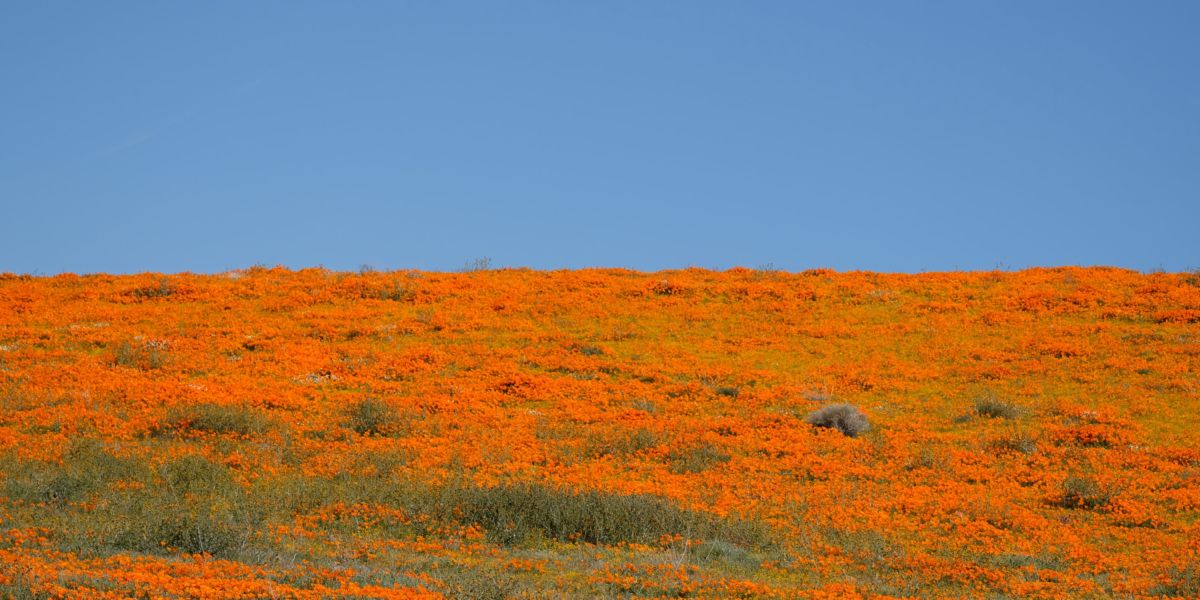
How to (Safely) View the Superbloom That Can Be Seen from Space
The current superbloom can be seen from space. Here’s what to do if you can’t get to space this spring.

Everyone knows that for a California desert superbloom to happen, you need a winter with mild temperatures and plenty of rain, neither of which happened during the state’s most recent cold, dry winter.
Luckily, everyone was wrong.
Although the outlook for wildflowers was bleak this year, a so-called Miracle March brought enough rain to trigger a surprise superbloom. Wildflowers, especially California poppies, are appearing in astounding numbers this month. In Southern California’s Antelope Valley, they are in fact so plentiful that they can be seen from space.

Courtesy of NASA
Most years, such a superbloom would trigger a rush of visitors, and most years, the public has to be reminded to tread lightly so as not to damage the flowers.
